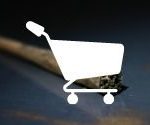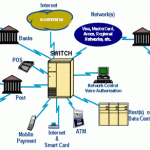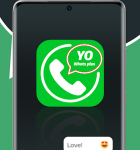
10 ideaów for a retail marketing campaign using beaconsów
The retail sector was one of the first to take an interest in proximity technology and Beacons. Many global brands are already using this technology in their points of sale, which willórities include, among others: Macy’s’s, Apply, American Eagle Outfitters, Carrefour, Sezeer, GameStop or Lord&Taylor. As research conducted by BusinessInsider shows, their number will grow rapidly – By 2016, 85 percent of. headóThe mobile app is a great way toóWhat retailers in the US will be using beacons in their stores.
How to effectively plan proximity marketing campaigns?
Perhaps you are facing a decision to implement contactless technology at your point of service. But before you do, rethink your strategy by answering a few simple but important questions: How do your customers make a purchaseów? What messages they can expect? What activities do you conduct in other communication channels (e.g. How do your customers make purchases (e.g., website, mobile app) and how can you integrate them together to create a holistic profile? What you plan to measure with beaconsów? How would you like to reward regular customersów?
Below we describe some effective ideasów, whoóThe mobile app can help you reach your target audience better and, in the long run, increase the loyalty of your customersów and increased popularity of your mobile application – as was the case with Carrefour – Thanks to the integration of the Carrefour app with the proximity platform system and beacons, the interaction time with the app increasesóby 400%. Within seven months of project implementation.
Ready-made ideas for using beaconsóThe retail sector was one of the first to take an interest in contactless technology and beacons at the point of sale:
1. Send discount offers or additional information when a customer approaches a specific póThe message will be read by the customer and he or she will spend a certain amount of time with it – sales messages are much more effective when the product is at your fingertips.
2. Say hello with a welcome message on your smartphone. Based on their previous visit and what they were looking for in a store, you can inform them that a particular product is already available or on promotion.
3. Based on the consumer’s paths of movement, the beaconóin you are able to determine whichóThe technology is only accelerating, and with it, the parts of your store that are visited more or less often, and based on that, you can better plan your product placement in the futureów, pónancial and even staff positions.
4. After making a purchase, send him a króThe smartphone is the first point of contact for a survey directly on the smartphone to gauge the shopper’s perceptions of their shopping experience – It will be up-to-date and fresh information, because it will be provided right after the visit.
5. Offer rewards for tasks completed during the point of sale visit, e.g. for posting a photo on Instagram with a new product hashtag attached.
6. Inform about the number of points scoredóin app loyalty, e.g. using theóin gamification to increase engagement, assign special badges.
7. Offer a product finder functionów through in-store navigation to find products on a shopping list fasterów – a good solution for stores with large space.
8. From the data collected by beacons you will get information about more and less busy days, so you can móHow to optimize staff working hours.
9. Provide the ability to communicate with staff at the app level, e.g. via instant messenger chat triggered when the shopper is inside the store.
10. Inform about the possibility of receiving a ready orderóInform customers of the possibility of collecting their order by sending notifications directly to their smartphones.
Factors driving the development of proximity technology
Retailers are recognizing the many advantages of proximity marketing, and it’s no wonder, as many circumstances are favoring the development of this technology. Móhere we go.in. of the data, with whichóAccording to the survey, out of more than 2.5 billion smartphonesóOn Android and Apple, more than 40 percent of the. Bluetooth Low Energy compatible – The signal emitted by beacons, whichóThe application on your smartphone should wake up the consumer. Consumers are increasingly willing to share their data, not long ago the idea of geolocation seemed like aóevelopments in the world of VR are slowly becoming standard for gamers and fansód danger, today most of us have GPS enabled on our smartphones and in our cars – This is not only a convenience, but sometimes a necessity in everyday life.
In addition, we still like to make purchasesóFor many, it is a form of social event in stationary stores. Even the Millennials generation still makes a purchaseóonline according to a study by WebPro News – 68 percent. respondentóof 18 to 25 year olds said they are more likely to make purchases on the goóonline than offline. We are definitely witnessing a revolution, as beacons are now considered the fastest growing technology in retail after mobile credit card readers.




